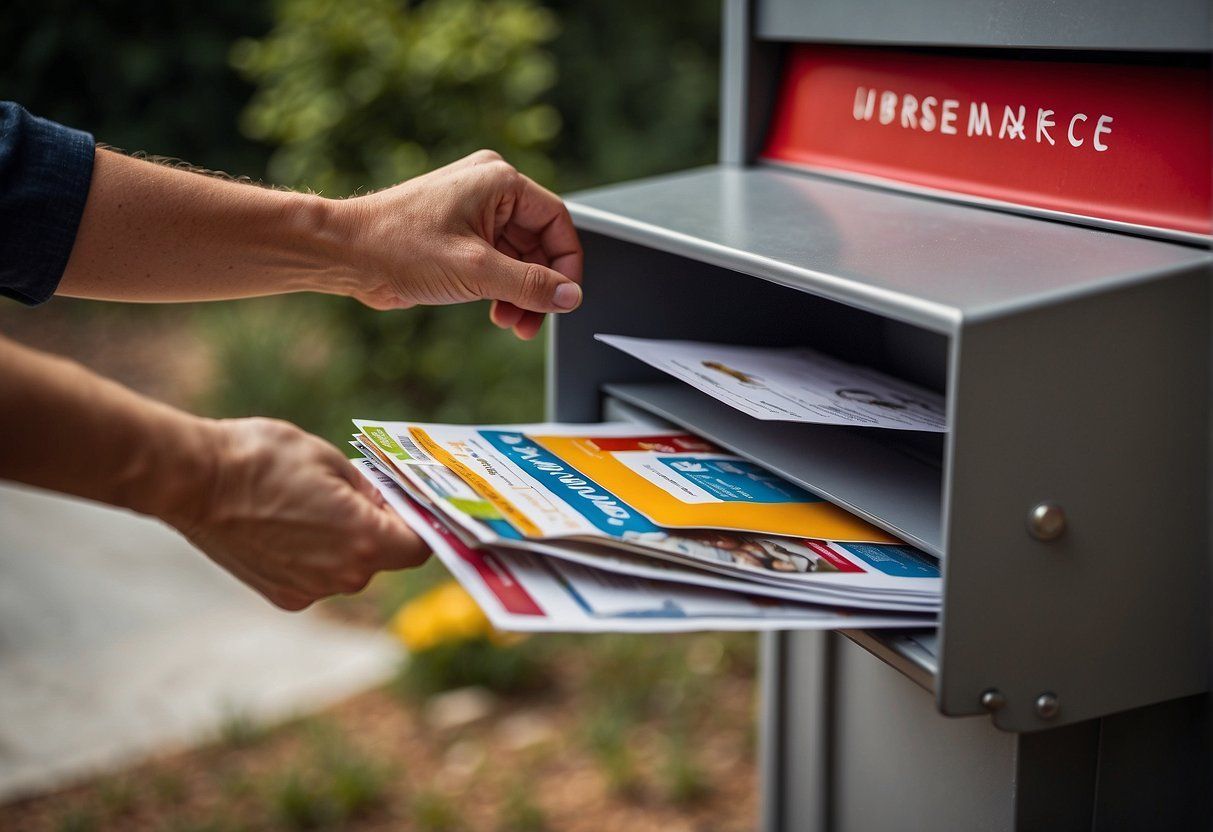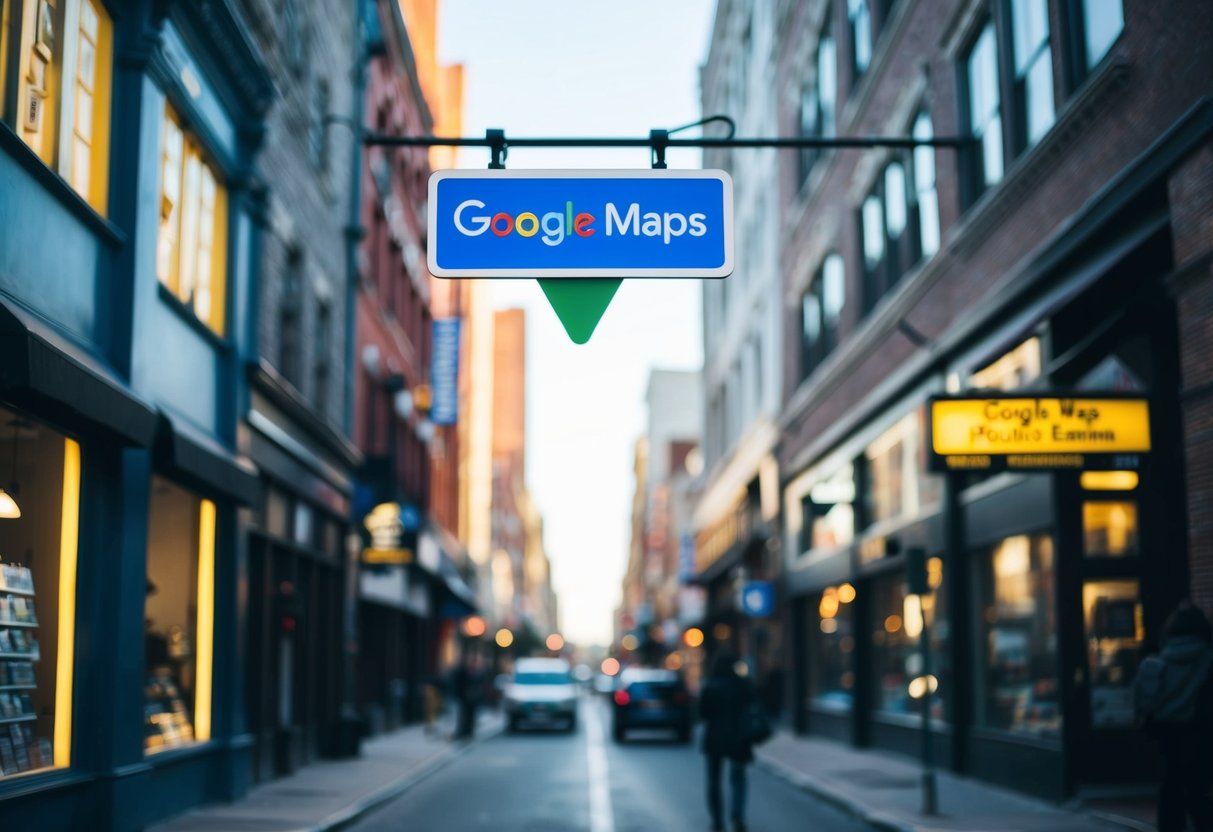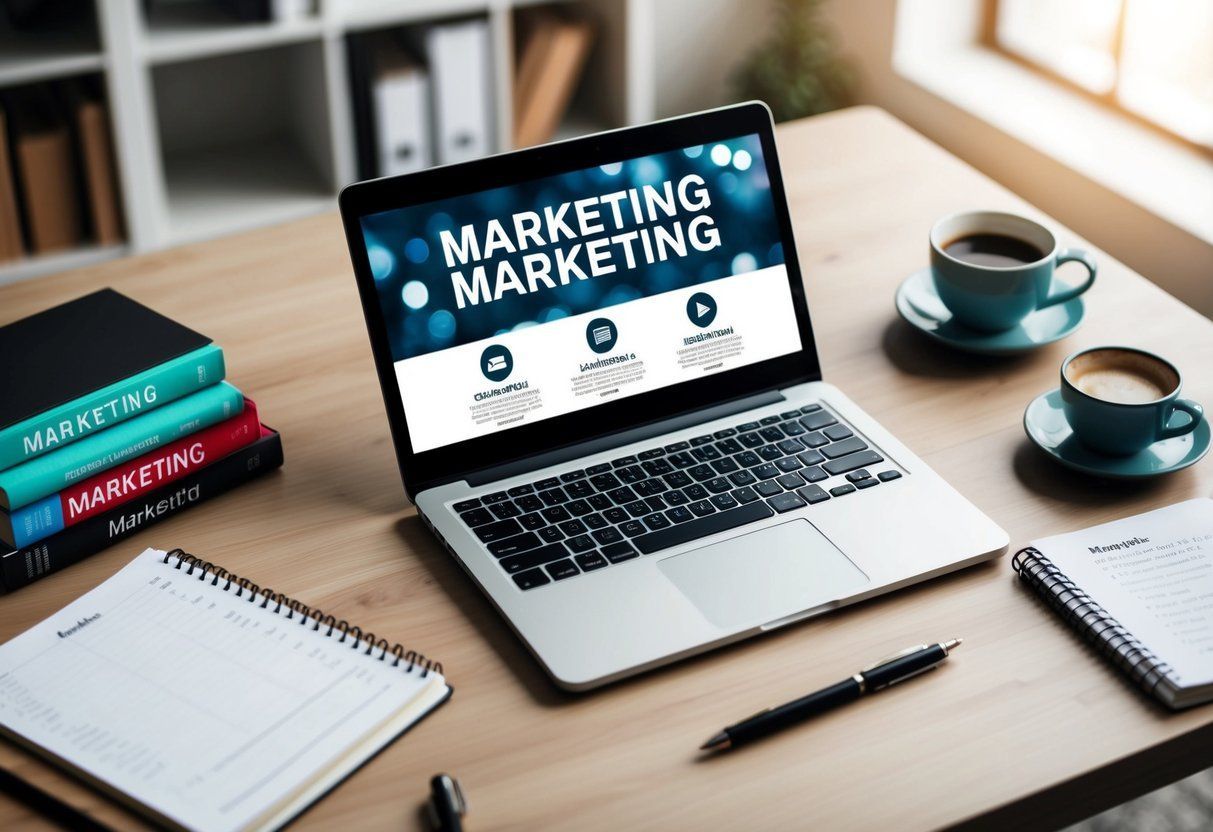New York City Lead Generation Los Angeles, CA Lead Generation Chicago, IL Lead Generation Houston, TX Lead Generation Phoenix, AZ Lead Generation Philadelphia, PA Lead Generation San Antonio, TX Lead Generation San Diego, CA Lead Generation Dallas, TX Lead Generation San Jose, CA Lead Generation Austin, TX Lead Generation Jacksonville, FL Lead Generation Fort Worth, TX Lead Generation Columbus, OH Lead Generation Indianapolis, IN Lead Generation Charlotte, NC Lead Generation San Francisco, CA Lead Generation Louisville, KY Lead Generation Seattle, WA Lead Generation Nashville, TN Lead Generation Denver, CO Lead Generation Washington, DC Lead Generation Oklahoma City, OK Lead Generation El Paso, TX Lead Generation Boston, MA Lead Generation Portland, OR Lead Generation Las Vegas, NV Lead Generation Detroit, MI Lead Generation Memphis, TN Lead Generation Baltimore, MD Lead Generation Milwaukee, WI Lead Generation Albuquerque, NM Lead Generation Tucson, AZ Lead Generation Fresno, CA Lead Generation Sacramento, CA Lead Generation Kansas City, MO Lead Generation Mesa, AZ Lead Generation Atlanta, GA Lead Generation Omaha, NE Lead Generation Colorado Springs, CO Lead Generation Raleigh, NC Lead Generation Long Beach, CA Lead Generation Virginia Beach, VA Lead Generation Miami, FL Lead Generation Oakland, CA Lead Generation Minneapolis, MN Lead Generation Tulsa, OK Lead Generation Bakersfield, CA Lead Generation Wichita, KS Lead Generation San Antonio, TX Lead Generation Las Vegas, NV Lead Generation Louisville, KY Lead Generation Milwaukee, WI Lead Generation Albuquerque, NM Lead Generation Tucson, AZ Lead Generation Fresno, CA Lead Generation Sacramento, CA Lead Generation Kansas City, MO Lead Generation Mesa, AZ Lead Generation Omaha, NE Lead Generation Colorado Springs, CO Lead Generation Long Beach, CA Lead Generation Virginia Beach, VA Lead Generation Oakland, CA Lead Generation Tulsa, OK Lead Generation Bakersfield, CA Lead Generation Wichita, KS Lead Generation Arlington, TX Lead Generation Tampa, FL Lead Generation Anaheim, CA Lead Generation Aurora, CO Lead Generation Santa Ana, CA Lead Generation Riverside, CA Lead Generation Corpus Christi, TX Lead Generation Lexington, KY Lead Generation Pittsburgh, PA Lead Generation Anchorage, AK Lead Generation Stockton, CA Lead Generation Cincinnati, OH Lead Generation St. Paul, MN Lead Generation Toledo, OH Lead Generation Newark, NJ Lead Generation Plano, TX Lead Generation Henderson, NV Lead Generation Lincoln, NE Lead Generation Orlando, FL Lead Generation Jersey City, NJ Lead Generation Chula Vista, CA Lead Generation Fort Wayne, IN Lead Generation St. Petersburg, FL Lead Generation Chandler, AZ Lead Generation Laredo, TX Lead Generation Norfolk, VA Lead Generation Durham, NC Lead Generation Madison, WI Lead Generation Lubbock, TX Lead Generation Irvine, CA Lead Generation Winston-Salem, NC Lead Generation Glendale, AZ Lead Generation New York City Dentist Marketing Los Angeles, CA Dentist Marketing Chicago, IL Dentist Marketing Houston, TX Dentist Marketing Phoenix, AZ Dentist Marketing Philadelphia, PA Dentist Marketing San Antonio, TX Dentist Marketing San Diego, CA Dentist Marketing Dallas, TX Dentist Marketing San Jose, CA Dentist Marketing Austin, TX Dentist Marketing Jacksonville, FL Dentist Marketing Fort Worth, TX Dentist Marketing Columbus, OH Dentist Marketing Indianapolis, IN Dentist Marketing Charlotte, NC Dentist Marketing San Francisco, CA Dentist Marketing Louisville, KY Dentist Marketing Seattle, WA Dentist Marketing Nashville, TN Dentist Marketing Denver, CO Dentist Marketing Washington, Dentist Marketing Oklahoma City, OK Dentist Marketing El Paso, TX Dentist Marketing Boston, MA Dentist Marketing Portland, OR Dentist Marketing Las Vegas, NV Dentist Marketing Detroit, MI Dentist Marketing Memphis, TN Dentist Marketing Baltimore, MD Dentist Marketing Milwaukee, WI Dentist Marketing Albuquerque, NM Dentist Marketing Tucson, AZ Dentist Marketing Fresno, CA Dentist Marketing Sacramento, CA Dentist Marketing Kansas City, MO Dentist Marketing Mesa, AZ Dentist Marketing Atlanta, GA Dentist Marketing Omaha, NE Dentist Marketing Colorado Springs, CO Dentist Marketing Raleigh, NC Dentist Marketing Long Beach, CA Dentist Marketing Virginia Beach, VA Dentist Marketing Miami, FL Dentist Marketing Oakland, CA Dentist Marketing Minneapolis, MN Dentist Marketing Tulsa, OK Dentist Marketing Bakersfield, CA Dentist Marketing Wichita, KS Dentist Marketing Arlington, VA Dentist Marketing LeadLane Terms Service in Sunland, CA LeadLane Design Services in Sunland, CA Logo Design in Sunland, CA Business Card Design in Sunland, CA Brand Guide Services in Sunland, CA Stationery Design in Sunland, CA New York City, NY Print Shop Lead Generation Los Angeles, CA Print Shop Lead Generation Chicago, IL Print Shop Lead Generation Houston, TX Print Shop Lead Generation Phoenix, AZ Print Shop Lead Generation Philadelphia, PA Print Shop Lead Generation San Antonio, TX Print Shop Lead Generation San Diego, CA Print Shop Lead Generation Dallas, TX Print Shop Lead Generation San Jose, CA Print Shop Lead Generation Austin, TX Print Shop Lead Generation Jacksonville, FL Print Shop Lead Generation Fort Worth, TX Print Shop Lead Generation Columbus, OH Print Shop Lead Generation Indianapolis, IN Print Shop Lead Generation Charlotte, NC Print Shop Lead Generation San Francisco, CA Print Shop Lead Generation Louisville, KY Print Shop Lead Generation Seattle, WA Print Shop Lead Generation Nashville, TN Print Shop Lead Generation Denver, CO Print Shop Lead Generation Washington, Print Shop Lead Generation Oklahoma City, OK Print Shop Lead Generation El Paso, TX Print Shop Lead Generation Boston, MA Print Shop Lead Generation Portland, OR Print Shop Lead Generation Las Vegas, NV Print Shop Lead Generation Detroit, MI Print Shop Lead Generation Memphis, TN Print Shop Lead Generation Baltimore, MD Print Shop Lead Generation Milwaukee, WI Print Shop Lead Generation Albuquerque, NM Print Shop Lead Generation Tucson, AZ Print Shop Lead Generation Fresno, CA Print Shop Lead Generation Sacramento, CA Print Shop Lead Generation Kansas City, MO Print Shop Lead Generation Mesa, AZ Print Shop Lead Generation Atlanta, GA Print Shop Lead Generation Omaha, NE Print Shop Lead Generation Colorado Springs, CO Print Shop Lead Generation Raleigh, NC Print Shop Lead Generation Long Beach, CA Print Shop Lead Generation Virginia Beach, VA Print Shop Lead Generation Miami, FL Print Shop Lead Generation Oakland, CA Print Shop Lead Generation Minneapolis, MN Print Shop Lead Generation Tulsa, OK Print Shop Lead Generation Bakersfield, CA Print Shop Lead Generation Wichita, KS Print Shop Lead Generation San Antonio, TX Print Shop Lead Generation Las Vegas, NV Print Shop Lead Generation Louisville, KY Print Shop Lead Generation Milwaukee, WI Print Shop Lead Generation Albuquerque, NM Print Shop Lead Generation Tucson, AZ Print Shop Lead Generation Fresno, CA Print Shop Lead Generation Sacramento, CA Print Shop Lead Generation Kansas City, MO Print Shop Lead Generation Mesa, AZ Print Shop Lead Generation Omaha, NE Print Shop Lead Generation Colorado Springs, CO Print Shop Lead Generation Long Beach, CA Print Shop Lead Generation Virginia Beach, VA Print Shop Lead Generation Oakland, CA Print Shop Lead Generation Tulsa, OK Print Shop Lead Generation Bakersfield, CA Print Shop Lead Generation Wichita, KS Print Shop Lead Generation Arlington, TX Print Shop Lead Generation Tampa, FL Print Shop Lead Generation Anaheim, CA Print Shop Lead Generation Aurora, CO Print Shop Lead Generation Santa Ana, CA Print Shop Lead Generation Riverside, CA Print Shop Lead Generation Corpus Christi, TX Print Shop Lead Generation Lexington, KY Print Shop Lead Generation Pittsburgh, PA Print Shop Lead Generation Anchorage, AK Print Shop Lead Generation Stockton, CA Print Shop Lead Generation Cincinnati, OH Print Shop Lead Generation St. Paul, MN Print Shop Lead Generation Toledo, OH Print Shop Lead Generation Newark, NJ Print Shop Lead Generation Plano, TX Print Shop Lead Generation Henderson, NV Print Shop Lead Generation Lincoln, NE Print Shop Lead Generation Orlando, FL Print Shop Lead Generation Jersey City, NJ Print Shop Lead Generation Chula Vista, CA Print Shop Lead Generation Fort Wayne, IN Print Shop Lead Generation St. Petersburg, FL Print Shop Lead Generation Chandler, AZ Print Shop Lead Generation Laredo, TX Print Shop Lead Generation Norfolk, VA Print Shop Lead Generation Durham, NC Print Shop Lead Generation Madison, WI Print Shop Lead Generation Lubbock, TX Print Shop Lead Generation Irvine, CA Print Shop Lead Generation Winston-Salem, NC Print Shop Lead Generation Glendale, AZ Print Shop Lead Generation New York City, NY Sign Company Lead Generation Los Angeles, CA Sign Company Lead Generation Chicago, IL Sign Company Lead Generation Houston, TX Sign Company Lead Generation Phoenix, AZ Sign Company Lead Generation Philadelphia, PA Sign Company Lead Generation San Antonio, TX Sign Company Lead Generation San Diego, CA Sign Company Lead Generation Dallas, TX Sign Company Lead Generation San Jose, CA Sign Company Lead Generation Austin, TX Sign Company Lead Generation Jacksonville, FL Sign Company Lead Generation Fort Worth, TX Sign Company Lead Generation Columbus, OH Sign Company Lead Generation Indianapolis, IN Sign Company Lead Generation Charlotte, NC Sign Company Lead Generation San Francisco, CA Sign Company Lead Generation Louisville, KY Sign Company Lead Generation Seattle, WA Sign Company Lead Generation Nashville, TN Sign Company Lead Generation Denver, CO Sign Company Lead Generation Washington, DC Sign Company Lead Generation Oklahoma City, OK Sign Company Lead Generation El Paso, TX Sign Company Lead Generation Boston, MA Sign Company Lead Generation Portland, OR Sign Company Lead Generation Las Vegas, NV Sign Company Lead Generation Detroit, MI Sign Company Lead Generation Memphis, TN Sign Company Lead Generation Baltimore, MD Sign Company Lead Generation Milwaukee, WI Sign Company Lead Generation Albuquerque, NM Sign Company Lead Generation Tucson, AZ Sign Company Lead Generation Fresno, CA Sign Company Lead Generation Sacramento, CA Sign Company Lead Generation Kansas City, MO Sign Company Lead Generation Mesa, AZ Sign Company Lead Generation Atlanta, GA Sign Company Lead Generation Omaha, NE Sign Company Lead Generation Colorado Springs, CO Sign Company Lead Generation Raleigh, NC Sign Company Lead Generation Long Beach, CA Sign Company Lead Generation Virginia Beach, VA Sign Company Lead Generation Miami, FL Sign Company Lead Generation Oakland, CA Sign Company Lead Generation Minneapolis, MN Sign Company Lead Generation Tulsa, OK Sign Company Lead Generation Bakersfield, CA Sign Company Lead Generation Wichita, KS Sign Company Lead Generation San Antonio, TX Sign Company Lead Generation Las Vegas, NV Sign Company Lead Generation Louisville, KY Sign Company Lead Generation Milwaukee, WI Sign Company Lead Generation Albuquerque, NM Sign Company Lead Generation Tucson, AZ Sign Company Lead Generation Fresno, CA Sign Company Lead Generation Sacramento, CA Sign Company Lead Generation Kansas City, MO Sign Company Lead Generation Mesa, AZ Sign Company Lead Generation Omaha, NE Sign Company Lead Generation Colorado Springs, CO Sign Company Lead Generation Long Beach, CA Sign Company Lead Generation Virginia Beach, VA Sign Company Lead Generation Oakland, CA Sign Company Lead Generation Tulsa, OK Sign Company Lead Generation Bakersfield, CA Sign Company Lead Generation Wichita, KS Sign Company Lead Generation Arlington, TX Sign Company Lead Generation Tampa, FL Sign Company Lead Generation Anaheim, CA Sign Company Lead Generation Aurora, CO Sign Company Lead Generation Santa Ana, CA Sign Company Lead Generation Riverside, CA Sign Company Lead Generation Corpus Christi, TX Sign Company Lead Generation Lexington, KY Sign Company Lead Generation Pittsburgh, PA Sign Company Lead Generation Anchorage, AK Sign Company Lead Generation Stockton, CA Sign Company Lead Generation Cincinnati, OH Sign Company Lead Generation St. Paul, MN Sign Company Lead Generation Toledo, OH Sign Company Lead Generation Newark, NJ Sign Company Lead Generation Plano, TX Sign Company Lead Generation Henderson, NV Sign Company Lead Generation Lincoln, NE Sign Company Lead Generation Orlando, FL Sign Company Lead Generation Jersey City, NJ Sign Company Lead Generation Chula Vista, CA Sign Company Lead Generation Fort Wayne, IN Sign Company Lead Generation St. Petersburg, FL Sign Company Lead Generation Chandler, AZ Sign Company Lead Generation Laredo, TX Sign Company Lead Generation Norfolk, VA Sign Company Lead Generation Durham, NC Sign Company Lead Generation Madison, WI Sign Company Lead Generation Lubbock, TX Sign Company Lead Generation Irvine, CA Sign Company Lead Generation Winston-Salem, NC Sign Company Lead Generation Glendale, AZ Sign Company Lead Generation New York City Home Service Lead Generation Los Angeles, CA Home Service Lead Generation Chicago, IL Home Service Lead Generation Houston, TX Home Service Lead Generation Phoenix, AZ Home Service Lead Generation Philadelphia, PA Home Service Lead Generation San Antonio, TX Home Service Lead Generation San Diego, CA Home Service Lead Generation Dallas Home Service Lead Generation San Jose, CA Home Service Lead Generation Austin, TX Home Service Lead Generation Jacksonville, FL Home Service Lead Generation Fort Worth, TX Home Service Lead Generation Columbus Home Service Lead Generation Indianapolis, IN Home Service Lead Generation Charlotte, NC Home Service Lead Generation San Francisco, CA Home Service Lead Generation Louisville, KY Home Service Lead Generation Seattle, WA Home Service Lead Generation Nashville Home Service Lead Generation Denver Home Service Lead Generation Washington, Home Service Lead Generation Oklahoma City Home Service Lead Generation El Paso, TX Home Service Lead Generation Boston Home Service Lead Generation Portland, OR Home Service Lead Generation Las Vegas, NV Home Service Lead Generation Detroit, MI Home Service Lead Generation Memphis, TN Home Service Lead Generation Baltimore, MD Home Service Lead Generation Milwaukee, WI Home Service Lead Generation Albuquerque, NM Home Service Lead Generation Tucson, AZ Home Service Lead Generation Fresno, CA Home Service Lead Generation Sacramento, CA Home Service Lead Generation Kansas City Home Service Lead Generation Mesa, AZ Home Service Lead Generation Atlanta, GA Home Service Lead Generation Omaha Home Service Lead Generation Colorado Springs, CO Home Service Lead Generation Raleigh, NC Home Service Lead Generation Long Beach, CA Home Service Lead Generation Virginia Beach, VA Home Service Lead Generation Miami, FL Home Service Lead Generation Oakland, CA Home Service Lead Generation Minneapolis, MN Home Service Lead Generation Tulsa, OK Home Service Lead Generation Bakersfield, CA Home Service Lead Generation Wichita, KS Home Service Lead Generation San Antonio, TX Home Service Lead Generation Las Vegas, NV Home Service Lead Generation Louisville, KY Home Service Lead Generation Milwaukee, WI Home Service Lead Generation Albuquerque, NM Home Service Lead Generation Tucson, AZ Home Service Lead Generation Fresno, CA Home Service Lead Generation Sacramento, CA Home Service Lead Generation Kansas City, MO Home Service Lead Generation Mesa, AZ Home Service Lead Generation Omaha, NE Home Service Lead Generation Colorado Springs, CO Home Service Lead Generation Long Beach, CA Home Service Lead Generation Virginia Beach, VA Home Service Lead Generation Oakland, CA Home Service Lead Generation Tulsa, OK Home Service Lead Generation Bakersfield, CA Home Service Lead Generation Wichita, KS Home Service Lead Generation Arlington, TX Home Service Lead Generation Tampa, FL Home Service Lead Generation Anaheim, CA Home Service Lead Generation Aurora, CO Home Service Lead Generation Santa Ana, CA Home Service Lead Generation Riverside, CA Home Service Lead Generation Corpus Christi, TX Home Service Lead Generation Lexington, KY Home Service Lead Generation Pittsburgh, PA Home Service Lead Generation Anchorage, AK Home Service Lead Generation Stockton, CA Home Service Lead Generation Cincinnati, OH Home Service Lead Generation St. Paul, MN Home Service Lead Generation Toledo, OH Home Service Lead Generation Newark, NJ Home Service Lead Generation Plano, TX Home Service Lead Generation Henderson, NV Home Service Lead Generation Lincoln, NE Home Service Lead Generation Orlando, FL Home Service Lead Generation Jersey City, NJ Home Service Lead Generation Chula Vista, CA Home Service Lead Generation Fort Wayne, IN Home Service Lead Generation St. Petersburg, FL Home Service Lead Generation Chandler, AZ Home Service Lead Generation Laredo, TX Home Service Lead Generation Norfolk, VA Home Service Lead Generation Durham, NC Home Service Lead Generation Madison, WI Home Service Lead Generation Lubbock, TX Home Service Lead Generation Irvine, CA Home Service Lead Generation Winston-Salem, NC Home Service Lead Generation Glendale, AZ Home Service Lead Generation New York City, Roofing Company Lead Generation Los Angeles, CA Roofing Company Lead Generation Chicago Roofing Company Lead Generation Houston, TX Roofing Company Lead Generation Phoenix, AZ Roofing Company Lead Generation Philadelphia, PA Roofing Company Lead Generation San Antonio, TX Roofing Company Lead Generation San Diego, CA Roofing Company Lead Generation Dallas, TX Roofing Company Lead Generation San Jose, CA Roofing Company Lead Generation Austin, TX Roofing Company Lead Generation Jacksonville, FL Roofing Company Lead Generation Fort Worth, TX Roofing Company Lead Generation Columbus Roofing Company Lead Generation Indianapolis, IN Roofing Company Lead Generation Charlotte, NC Roofing Company Lead Generation San Francisco, CA Roofing Company Lead Generation Louisville, KY Roofing Company Lead Generation Seattle, WA Roofing Company Lead Generation Nashville Roofing Company Lead Generation Denver, CO Roofing Company Lead Generation Washington Roofing Company Lead Generation Oklahoma City, OK Roofing Company Lead Generation El Paso, TX Roofing Company Lead Generation Boston, MA Roofing Company Lead Generation Portland, OR Roofing Company Lead Generation Las Vegas, NV Roofing Company Lead Generation Detroit, MI Roofing Company Lead Generation Memphis, TN Roofing Company Lead Generation Baltimore, MD Roofing Company Lead Generation Milwaukee, WI Roofing Company Lead Generation Albuquerque, NM Roofing Company Lead Generation Tucson, AZ Roofing Company Lead Generation Fresno, CA Roofing Company Lead Generation Sacramento, CA Roofing Company Lead Generation Kansas City, MO Roofing Company Lead Generation Mesa, AZ Roofing Company Lead Generation Atlanta Roofing Company Lead Generation Omaha, NE Roofing Company Lead Generation Colorado Springs, CO Roofing Company Lead Generation Raleigh, NC Roofing Company Lead Generation Long Beach, CA Roofing Company Lead Generation Virginia Beach, VA Roofing Company Lead Generation Miami, FL Roofing Company Lead Generation Oakland, CA Roofing Company Lead Generation Minneapolis, MN Roofing Company Lead Generation Tulsa, OK Roofing Company Lead Generation Bakersfield, CA Roofing Company Lead Generation Wichita, KS Roofing Company Lead Generation San Antonio, TX Roofing Company Lead Generation Las Vegas, NV Roofing Company Lead Generation Louisville, KY Roofing Company Lead Generation Milwaukee, WI Roofing Company Lead Generation Albuquerque, NM Roofing Company Lead Generation Tucson, AZ Roofing Company Lead Generation Fresno, CA Roofing Company Lead Generation Sacramento, CA Roofing Company Lead Generation Kansas City, MO Roofing Company Lead Generation Mesa, AZ Roofing Company Lead Generation Omaha, NE Roofing Company Lead Generation Colorado Springs, CO Roofing Company Lead Generation Long Beach, CA Roofing Company Lead Generation Virginia Beach, VA Roofing Company Lead Generation Oakland, CA Roofing Company Lead Generation Tulsa, OK Roofing Company Lead Generation Bakersfield, CA Roofing Company Lead Generation Wichita, KS Roofing Company Lead Generation Arlington, TX Roofing Company Lead Generation Tampa, FL Roofing Company Lead Generation Anaheim, CA Roofing Company Lead Generation Aurora, CO Roofing Company Lead Generation Santa Ana, CA Roofing Company Lead Generation Riverside, CA Roofing Company Lead Generation Corpus Christi, TX Roofing Company Lead Generation Lexington, KY Roofing Company Lead Generation Pittsburgh, PA Roofing Company Lead Generation Anchorage, AK Roofing Company Lead Generation Stockton, CA Roofing Company Lead Generation Cincinnati, OH Roofing Company Lead Generation St. Paul, MN Roofing Company Lead Generation Toledo, OH Roofing Company Lead Generation Newark, NJ Roofing Company Lead Generation Plano, TX Roofing Company Lead Generation Henderson, NV Roofing Company Lead Generation Lincoln, NE Roofing Company Lead Generation Orlando, FL Roofing Company Lead Generation Jersey City, NJ Roofing Company Lead Generation Chula Vista, CA Roofing Company Lead Generation Fort Wayne, IN Roofing Company Lead Generation St. Petersburg, FL Roofing Company Lead Generation Chandler, AZ Roofing Company Lead Generation Laredo, TX Roofing Company Lead Generation Norfolk, VA Roofing Company Lead Generation Durham, NC Roofing Company Lead Generation Madison, WI Roofing Company Lead Generation Lubbock, TX Roofing Company Lead Generation Irvine, CA Roofing Company Lead Generation Winston-Salem, NC Roofing Company Lead Generation Glendale, AZ Roofing Company Lead Generation New York City, NY Home Inspection Leads Los Angeles, CA Home Inspection Leads Chicago, IL Home Inspection Leads Houston, TX Home Inspection Leads Phoenix, AZ Home Inspection Leads Philadelphia, PA Home Inspection Leads San Antonio, TX Home Inspection Leads San Diego, CA Home Inspection Leads Dallas, TX Home Inspection Leads San Jose, CA Home Inspection Leads Austin, TX Home Inspection Leads Jacksonville, FL Home Inspection Leads Fort Worth, TX Home Inspection Leads Columbus, OH Home Inspection Leads Indianapolis, IN Home Inspection Leads Charlotte, NC Home Inspection Leads San Francisco, CA Home Inspection Leads Louisville, KY Home Inspection Leads Seattle, WA Home Inspection Leads Nashville, TN Home Inspection Leads Denver, CO Home Inspection Leads Washington, Home Inspection Leads Oklahoma City, OK Home Inspection Leads El Paso, TX Home Inspection Leads Boston Home Inspection Leads Portland, OR Home Inspection Leads Las Vegas, NV Home Inspection Leads Detroit, MI Home Inspection Leads Memphis, TN Home Inspection Leads Baltimore, MD Home Inspection Leads Milwaukee, WI Home Inspection Leads Albuquerque, NM Home Inspection Leads Tucson, AZ Home Inspection Leads Fresno, CA Home Inspection Leads Sacramento, CA Home Inspection Leads Kansas City, MO Home Inspection Leads Mesa, AZ Home Inspection Leads Atlanta, GA Home Inspection Leads Omaha, NE Home Inspection Leads Colorado Springs, CO Home Inspection Leads Raleigh, NC Home Inspection Leads Long Beach, CA Home Inspection Leads Virginia Beach, VA Home Inspection Leads Miami, FL Home Inspection Leads Oakland, CA Home Inspection Leads Minneapolis, MN Home Inspection Leads Tulsa, OK Home Inspection Leads Bakersfield, CA Home Inspection Leads Wichita, KS Home Inspection Leads San Antonio, TX Home Inspection Leads Las Vegas, NV Home Inspection Leads Louisville, KY Home Inspection Leads Milwaukee, WI Home Inspection Leads Albuquerque, NM Home Inspection Leads Tucson, AZ Home Inspection Leads Fresno, CA Home Inspection Leads Sacramento, CA Home Inspection Leads Kansas City, MO Home Inspection Leads Mesa, AZ Home Inspection Leads Omaha, NE Home Inspection Leads Colorado Springs, CO Home Inspection Leads Long Beach, CA Home Inspection Leads Virginia Beach, VA Home Inspection Leads Oakland, CA Home Inspection Leads Tulsa, OK Home Inspection Leads Bakersfield, CA Home Inspection Leads Wichita, KS Home Inspection Leads Arlington, TX Home Inspection Leads Tampa, FL Home Inspection Leads Anaheim, CA Home Inspection Leads Aurora, CO Home Inspection Leads Santa Ana, CA Home Inspection Leads Riverside, CA Home Inspection Leads Corpus Christi, TX Home Inspection Leads Lexington, KY Home Inspection Leads Pittsburgh, PA Home Inspection Leads Anchorage, AK Home Inspection Leads Stockton, CA Home Inspection Leads Cincinnati, OH Home Inspection Leads St. Paul, MN Home Inspection Leads Toledo, OH Home Inspection Leads Newark, NJ Home Inspection Leads Plano, TX Home Inspection Leads Henderson, NV Home Inspection Leads Lincoln, NE Home Inspection Leads Orlando, FL Home Inspection Leads Jersey City, NJ Home Inspection Leads Chula Vista, CA Home Inspection Leads Fort Wayne, IN Home Inspection Leads St. Petersburg, FL Home Inspection Leads Chandler, AZ Home Inspection Leads Laredo, TX Home Inspection Leads Norfolk, VA Home Inspection Leads Durham, NC Home Inspection Leads Madison, WI Home Inspection Leads Lubbock, TX Home Inspection Leads Irvine, CA Home Inspection Leads Winston-Salem, NC Home Inspection Leads Glendale, AZ Home Inspection Leads New York City, NY Printing Leads Los Angeles, CA Printing Leads Chicago, IL Printing Leads Houston, TX Printing Leads Phoenix, AZ Printing Leads Philadelphia, PA Printing Leads San Antonio, TX Printing Leads San Diego, CA Printing Leads Dallas, TX Printing Leads San Jose, CA Printing Leads Austin, TX Printing Leads Jacksonville, FL Printing Leads Fort Worth, TX Printing Leads Columbus, OH Printing Leads Indianapolis, IN Printing Leads Charlotte, NC Printing Leads San Francisco, CA Printing Leads Louisville, KY Printing Leads Seattle, WA Printing Leads Nashville, TN Printing Leads Denver, CO Printing Leads Washington, DC Printing Leads Oklahoma City, OK Printing Leads El Paso, TX Printing Leads Boston, MA Printing Leads Portland, OR Printing Leads Las Vegas, NV Printing Leads Detroit, MI Printing Leads Memphis, TN Printing Leads Baltimore, MD Printing Leads Milwaukee, WI Printing Leads Albuquerque, NM Printing Leads Tucson, AZ Printing Leads Fresno, CA Printing Leads Sacramento, CA Printing Leads Kansas City, MO Printing Leads Mesa, AZ Printing Leads Atlanta, GA Printing Leads Omaha, NE Printing Leads Colorado Springs, CO Printing Leads Raleigh, NC Printing Leads Long Beach, CA Printing Leads Virginia Beach, VA Printing Leads Miami Printing Leads Oakland, CA Printing Leads Minneapolis, MN Printing Leads Tulsa, OK Printing Leads Bakersfield, CA Printing Leads Wichita, KS Printing Leads San Antonio, TX Printing Leads Las Vegas, NV Printing Leads Louisville, KY Printing Leads Milwaukee, WI Printing Leads Albuquerque, NM Printing Leads Tucson, AZ Printing Leads Fresno, CA Printing Leads Sacramento, CA Printing Leads Kansas City, MO Printing Leads Mesa, AZ Printing Leads Omaha, NE Printing Leads Colorado Springs, CO Printing Leads Long Beach, CA Printing Leads Virginia Beach, VA Printing Leads Oakland, CA Printing Leads Tulsa, OK Printing Leads Bakersfield, CA Printing Leads Wichita, KS Printing Leads Arlington, TX Printing Leads Tampa, FL Printing Leads Anaheim, CA Printing Leads Aurora, CO Printing Leads Santa Ana, CA Printing Leads Riverside, CA Printing Leads Corpus Christi, TX Printing Leads Lexington, KY Printing Leads Pittsburgh, PA Printing Leads Anchorage, AK Printing Leads Stockton, CA Printing Leads Cincinnati, OH Printing Leads St. Paul, MN Printing Leads Toledo, OH Printing Leads Newark, NJ Printing Leads Plano, TX Printing Leads Henderson, NV Printing Leads Lincoln, NE Printing Leads Orlando, FL Printing Leads Jersey City, NJ Printing Leads Chula Vista, CA Printing Leads Fort Wayne, IN Printing Leads St. Petersburg, FL Printing Leads Chandler, AZ Printing Leads Laredo, TX Printing Leads Norfolk, VA Printing Leads Durham, NC Printing Leads Madison, WI Printing Leads Lubbock, TX Printing Leads Irvine, CA Printing Leads Winston-Salem, NC Printing Leads Glendale, AZ Printing Leads New York City, Online Marketing for Printing Companies Los Angeles, CA Online Marketing for Printing Companies Chicago, IL Online Marketing for Printing Companies Houston, TX Online Marketing for Printing Companies Phoenix, AZ Online Marketing for Printing Companies Philadelphia, PA Online Marketing for Printing Companies San Antonio, TX Online Marketing for Printing Companies San Diego, CA Online Marketing for Printing Companies Dallas, TX Online Marketing for Printing Companies San Jose, CA Online Marketing for Printing Companies Austin, TX Online Marketing for Printing Companies Jacksonville, FL Online Marketing for Printing Companies Fort Worth, TX Online Marketing for Printing Companies Columbus, OH Online Marketing for Printing Companies Indianapolis, IN Online Marketing for Printing Companies Charlotte, NC Online Marketing for Printing Companies San Francisco, CA Online Marketing for Printing Companies Louisville, KY Online Marketing for Printing Companies Seattle, WA Online Marketing for Printing Companies Nashville, TN Online Marketing for Printing Companies Denver, CO Online Marketing for Printing Companies Washington, Online Marketing for Printing Companies Oklahoma City, OK Online Marketing for Printing Companies El Paso, TX Online Marketing for Printing Companies Boston Online Marketing for Printing Companies Portland, OR Online Marketing for Printing Companies Las Vegas, NV Online Marketing for Printing Companies Detroit, MI Online Marketing for Printing Companies Memphis, TN Online Marketing for Printing Companies Baltimore, MD Online Marketing for Printing Companies Milwaukee, WI Online Marketing for Printing Companies Albuquerque Online Marketing for Printing Companies Tucson, AZ Online Marketing for Printing Companies Fresno, CA Online Marketing for Printing Companies Sacramento, CA Online Marketing for Printing Companies Kansas City, Online Marketing for Printing Companies Mesa, AZ Online Marketing for Printing Companies Atlanta, GA Online Marketing for Printing Companies Omaha, NE Online Marketing for Printing Companies Colorado Springs, CO Online Marketing for Printing Companies Raleigh, NC Online Marketing for Printing Companies Long Beach, CA Online Marketing for Printing Companies Virginia Beach, VA Online Marketing for Printing Companies Miami, FL Online Marketing for Printing Companies Oakland, CA Online Marketing for Printing Companies Minneapolis, MN Online Marketing for Printing Companies Tulsa, OK Online Marketing for Printing Companies Bakersfield, CA Online Marketing for Printing Companies Wichita, KS Online Marketing for Printing Companies San Antonio, TX Online Marketing for Printing Companies Las Vegas, NV Online Marketing for Printing Companies Louisville, KY Online Marketing for Printing Companies Milwaukee, WI Online Marketing for Printing Companies Albuquerque, NM Online Marketing for Printing Companies Tucson, AZ Online Marketing for Printing Companies Fresno, CA Online Marketing for Printing Companies Sacramento, CA Online Marketing for Printing Companies Kansas City, MO Online Marketing for Printing Companies Mesa, AZ Online Marketing for Printing Companies Omaha, NE Online Marketing for Printing Companies Colorado Springs, CO Online Marketing for Printing Companies Long Beach, CA Online Marketing for Printing Companies Virginia Beach, VA Online Marketing for Printing Companies Oakland, CA Online Marketing for Printing Companies Tulsa, OK Online Marketing for Printing Companies Bakersfield, CA Online Marketing for Printing Companies Wichita, KS Online Marketing for Printing Companies Arlington, TX Online Marketing for Printing Companies Tampa, FL Online Marketing for Printing Companies Anaheim, CA Online Marketing for Printing Companies Aurora, CO Online Marketing for Printing Companies Santa Ana, CA Online Marketing for Printing Companies Riverside, CA Online Marketing for Printing Companies Corpus Christi, TX Online Marketing for Printing Companies Lexington, KY Online Marketing for Printing Companies Pittsburgh, PA Online Marketing for Printing Companies Anchorage, AK Online Marketing for Printing Companies Stockton, CA Online Marketing for Printing Companies Cincinnati, OH Online Marketing for Printing Companies St. Paul, MN Online Marketing for Printing Companies Toledo, OH Online Marketing for Printing Companies Newark, NJ Online Marketing for Printing Companies Plano, TX Online Marketing for Printing Companies Henderson, NV Online Marketing for Printing Companies Lincoln, NE Online Marketing for Printing Companies Orlando, FL Online Marketing for Printing Companies Jersey City, NJ Online Marketing for Printing Companies Chula Vista, CA Online Marketing for Printing Companies Fort Wayne, IN Online Marketing for Printing Companies St. Petersburg, FL Online Marketing for Printing Companies Chandler, AZ Online Marketing for Printing Companies Laredo, TX Online Marketing for Printing Companies Norfolk, VA Online Marketing for Printing Companies Durham, NC Online Marketing for Printing Companies Madison, WI Online Marketing for Printing Companies Lubbock, TX Online Marketing for Printing Companies Irvine, CA Online Marketing for Printing Companies Winston-Salem, NC Online Marketing for Printing Companies Glendale, AZ Online Marketing for Printing Companies Buffalo, NY Online Marketing for Printing Companies St. Louis, MO Online Marketing for Printing Companies Birmingham, AL Online Marketing for Printing Companies Baton Rouge, LA Online Marketing for Printing Companies Rochester, NY Online Marketing for Printing Companies Spokane, WA Online Marketing for Printing Companies Des Moines, IA Online Marketing for Printing Companies Grand Rapids, MI Online Marketing for Printing Companies Richmond, VA Online Marketing for Printing Companies Boise, ID Online Marketing for Printing Companies Fayetteville, NC Online Marketing for Printing Companies Mobile, AL Online Marketing for Printing Companies Salt Lake City, UT Online Marketing for Printing Companies Huntsville, AL Online Marketing for Printing Companies Knoxville, TN Online Marketing for Printing Companies Little Rock, AR Online Marketing for Printing Companies Chattanooga, TN Online Marketing for Printing Companies Newport News, VA Online Marketing for Printing Companies Providence, RI Online Marketing for Printing Companies Jackson, MS Online Marketing for Printing Companies Worcester, MA Online Marketing for Printing Companies Tempe, AZ Online Marketing for Printing Companies Cape Coral, FL Online Marketing for Printing Companies Springfield, MO Online Marketing for Printing Companies Lancaster, CA Online Marketing for Printing Companies Eugene, OR Online Marketing for Printing Companies Pembroke Pines, FL Online Marketing for Printing Companies Peoria, AZ Online Marketing for Printing Companies Sioux Falls, SD Online Marketing for Printing Companies Springfield, MA Online Marketing for Printing Companies Fort Collins, CO Online Marketing for Printing Companies Glendale, CA Online Marketing for Printing Companies Savannah, GA Online Marketing for Printing Companies Oceanside, CA Online Marketing for Printing Companies Frisco, TX Online Marketing for Printing Companies Pasadena, TX Online Marketing for Printing Companies Syracuse, NY Online Marketing for Printing Companies Tallahassee, FL Online Marketing for Printing Companies Overland Park, KS Online Marketing for Printing Companies McKinney, TX Online Marketing for Printing Companies Aurora, IL Online Marketing for Printing Companies Vancouver, WA Online Marketing for Printing Companies Akron, OH Online Marketing for Printing Companies Rancho Cucamonga, CA Online Marketing for Printing Companies Lexington, MA Online Marketing for Printing Companies Macon, GA Online Marketing for Printing Companies Joliet, IL Online Marketing for Printing Companies Paterson, NJ Online Marketing for Printing Companies Bridgeport, CT Online Marketing for Printing Companies Simi Valley, CA Online Marketing for Printing Companies Hollywood, FL Online Marketing for Printing Companies Clarksville, TN Online Marketing for Printing Companies Alexandria, VA Online Marketing for Printing Companies Hayward, CA Online Marketing for Printing Companies Lakewood, CO Online Marketing for Printing Companies Torrance, CA Online Marketing for Printing Companies Escondido, CA Online Marketing for Printing Companies Naperville, IL Online Marketing for Printing Companies Dayton, OH Online Marketing for Printing Companies Orange, CA Online Marketing for Printing Companies Fullerton, CA Online Marketing for Printing Companies Pasadena, CA Online Marketing for Printing Companies McAllen, TX Online Marketing for Printing Companies Killeen, TX Online Marketing for Printing Companies Hampton, VA Online Marketing for Printing Companies Bellevue, WA Online Marketing for Printing Companies Warren, MI Online Marketing for Printing Companies Miramar, FL Online Marketing for Printing Companies West Valley City, UT Online Marketing for Printing Companies Olathe, KS Online Marketing for Printing Companies Columbia, SC Online Marketing for Printing Companies Sterling Heights, MI Online Marketing for Printing Companies Thornton, CO Online Marketing for Printing Companies New Haven, CT Online Marketing for Printing Companies Waco, TX Online Marketing for Printing Companies Charleston, SC Online Marketing for Printing Companies Visalia, CA Online Marketing for Printing Companies Topeka, KS Online Marketing for Printing Companies Elizabeth, NJ Online Marketing for Printing Companies Gainesville, FL Online Marketing for Printing Companies Cedar Rapids, IA Online Marketing for Printing Companies Coral Springs, FL Online Marketing for Printing Companies Stamford, CT Online Marketing for Printing Companies Kent, WA Online Marketing for Printing Companies Lafayette, LA Online Marketing for Printing Companies Midland, TX Online Marketing for Printing Companies Santa Clara, CA Online Marketing for Printing Companies Round Rock, TX Online Marketing for Printing Companies Beaumont, TX Online Marketing for Printing Companies Norman, OK Online Marketing for Printing Companies Allentown, PA Online Marketing for Printing Companies Berkeley, CA Online Marketing for Printing Companies Odessa, TX Online Marketing for Printing Companies
How to Get More Clients with Printed Marketing: Proven Strategies for Business Growth
Printed marketing, despite the rise of digital platforms, remains a relevant and powerful tool for businesses looking to attract new clients. By leveraging the tangibility and perceived value of printed materials, companies can create a memorable impact on their target audience, fostering trust and brand awareness. To achieve this, a strategy that aligns with the company’s goals and understands the audience demographics is essential. With strategic planning and striking design, printed marketing can captivate potential customers in a way that digital media often cannot.

Effective print marketing is not just about creating attractive flyers or brochures; it’s also about understanding and reaching the right people through targeted distribution and direct marketing efforts. Combining this targeted approach with analytics and a consistent message across both print and digital media can create a marketing synergy that maximizes engagement. Maintaining client relationships and expanding reach through events and networking are further enhanced through the strategic use of printed materials. Printed marketing provides a tactile dimension to a brand’s message, serving as a physical reminder of the brand and augmenting digital campaigns for a comprehensive marketing strategy.
Key Takeaways
- Printed materials enhance trust and brand recognition in ways that digital media may not fully replicate.
- A strategic and targeted approach to distribution is critical for the success of print marketing campaigns.
- Combining print with digital efforts and analytics leads to a cohesive and effective marketing strategy.
Understanding the Power of Print Marketing
Print marketing remains a vital strategy for attracting new clients, offering distinct advantages in trust-building and engagement. It complements digital marketing by enhancing brand identity and plays a critical role in a balanced marketing mix.
The Advantages of Printed Materials Over Digital
Engagement: Printed materials offer a tactile experience that often leads to better engagement rates compared to digital ads. Physical marketing pieces, such as brochures and flyers, tend to stay in offices or homes longer, giving your brand greater exposure. Studies show that print ads lead to a higher emotional response, which can significantly improve conversion rates.
Branding: Print provides a unique opportunity for businesses to express their brand identity consistently. Printed materials can mirror the aesthetics of your company, from color schemes to logos, in a way that can be more memorable than the fleeting nature of digital content.
Identifying Your Target Audience for Printed Content
Demographics: Understanding your target audience is essential for the success of any print marketing campaign. Companies need to analyze demographic data to determine the type of content that would resonate best with potential customers. Print marketing strategies should be designed with a clear vision of whom they’re intended for to maximize reach and ROI.
Affinities: Aligning the content of your printed materials with the interests and needs of your audience can foster a sense of connection and trust. Whether it’s through informative articles or appealing visuals, print can cater to the preferences of a specific demographic, driving awareness and patronage.
Establishing Trust and Credibility Through Print
Reputation: Print marketing is an excellent tool for establishing and solidifying a business’s reputation. Tangible materials like quality business cards, catalogues, and mailers can lend credibility and demonstrate commitment to quality, instilling greater trust in your brand.
Consistency: Consistency in branding across printed materials instills confidence in consumers. A clear and consistent brand identity across all marketing channels contributes to stronger brand recognition and trust , essential components of a successful client attraction strategy.
Print marketing has the unique ability to cut through the digital noise, offering longevity and substance. By leveraging the inherent strengths of print marketing in building trust , awareness , and engagement , businesses can forge strong connections with their target audience , helping to reinforce their brand identity and improve overall ROI.
Strategic Planning for Print Marketing Success
Strategic planning is essential for leveraging print marketing to attract more clients. A rigorous approach ensures that every dollar spent contributes meaningfully to the overall business plan.
Creating a Comprehensive Print Marketing Plan
A meticulous print marketing plan serves as a roadmap to business growth. It starts with identifying the target audience , as this defines the content and design of the print materials. Businesses must then outline clear marketing strategies ; for instance, integrating direct mail campaigns with event promotions can reinforce the message and increase visibility. Decisions on the types of print materials—such as brochures, flyers, or posters—should align with the intended impact and audience interactions suggested by sources like Avada.
Budgeting for Your Printed Marketing Campaigns
Allocating funds for print marketing campaigns requires careful consideration. Businesses should establish a budget that reflects both the scope of their campaigns and the anticipated return on investment. Essential costs include design, printing, distribution, and tracking mechanisms to evaluate campaign effectiveness. Costs should be delineated, often in a table format, to provide clear insight into allocations for various aspects of print marketing:
| Marketing Component | Percentage of Budget |
|---|---|
| Design | 25% |
| Printing | 50% |
| Distribution | 15% |
| Performance Tracking | 10% |
Businesses should fondly remember that a well-budgeted print marketing campaign is more likely to yield a positive response and ultimately secure a stronger clientele base. Information on strategic budgeting can be enhanced by insights from credible sources, such as Solo Printing’s guide to print marketing.
Designing Impactful Printed Marketing Materials
Effective print marketing relies on strategic design to engage audiences and promote services or products. It is paramount for businesses to foster brand recognition by ensuring that their marketing collateral communicates their message with clarity and visual appeal.
Ensuring Clarity and Consistency Across Materials
Printed marketing materials should maintain a clear and consistent message across all forms of marketing collateral. This means that whether a customer is looking at a flyer, brochure, or business card, the core message about the services or products offered should be immediate and unmistakable. Clarity can be achieved by using concise messaging and a strong call-to-action, making sure that the most important information stands out. Consistency in design elements such as fonts , color schemes, and imagery ensures that the brand is easily recognized, which in turn fosters trust and brand loyalty.
The Role of Visuals and Fonts in Effective Design
The choice of visuals and fonts plays a crucial role in capturing attention and conveying the intended tone of the marketing materials. High-quality images and graphics can create an engaging visual hierarchy, guiding the viewer’s eye to the most important information. Fonts should be legible and appropriate for the brand’s personality; for instance, a law firm might opt for a clean, serif font to convey professionalism, while a creative studio might choose a more unique, expressive font. The balance and contrast between visuals and text aid in delivering a message that not only attracts but also retains the viewer’s interest.
In designing impactful print marketing, businesses should remember that every element of their materials contributes to the overall perception of their brand, and ultimately, to their success in gaining more clients.
Targeted Distribution and Direct Marketing

Targeted distribution and direct marketing strategies facilitate a more personalized approach to reaching potential clients. Through these methods, businesses can narrow down their audience and deliver tailored messages effectively.
The Benefits of Direct Mail Marketing
Direct mail marketing allows businesses to reach their target audience in a tangible way. Unlike digital advertisements, direct mail is a physical object which can be personalized to enhance the user experience. Using direct mail, companies have the opportunity to stand out in their target market with creative designs and clear messaging that speaks to the reader’s interests and needs.
For local businesses, direct mail strategies can be optimized by employing the services of the United States Postal Service (USPS) to target specific ZIP codes, leveraging their knowledge and resources. A key tactic is integrating the business’ Unique Selling Proposition (USP) into the materials, thereby showcasing what sets them apart from competitors.
- Benefits include:
- Personalization for the recipient
- Higher engagement rates
- Tangible materials that are more likely to be saved and referred to again
Leveraging Local SEO with Printed Materials for Local Businesses
Local businesses can use printed materials as an effective means to boost their local SEO efforts. By including their business directory links, QR codes that direct to their website, or social media information on physical advertisements, they can increase their online visibility. This intersection between print and digital can drive traffic both to their physical location and their online presence.
Local SEO should be a consideration in all printed marketing materials. They should feature:
- Local keywords and phrases that are relevant to the community
- The business address and phone number in a prominent location
- Calls to action directing readers to visit online resources for more information or exclusive offers
Employing these strategies ensures that the printed materials contribute to the digital footprint of the business, enhancing overall discoverability.
Maximizing Engagement with Printed Materials

Effectively using printed marketing materials can significantly increase engagement and drive higher conversion and response rates. By integrating modern technologies such as QR codes and crafting compelling calls to action, businesses can create interactive experiences that resonate with their audience.
Innovative Uses of QR Codes for Interactive Experiences
QR codes on flyers and postcards can transform static printed material into a dynamic part of a marketing strategy. These codes link to digital platforms, offering a seamless transition from physical to online content. Here are specific ways to leverage QR codes:
- Event Information : Embed QR codes onto printed materials to give instant access to event details, sign-up forms, or exclusive content.
- Video Content : Connect potential clients with engaging videos that showcase services or products, further enhancing their interaction with the brand.
QR code integration helps to track response rates more efficiently, providing valuable data on customer engagement.
Encouraging Customer Interactions with Calls to Action
A powerful call to action (CTA) is essential to prompt an immediate response from potential clients. Effective CTAs on printed materials should be:
- Visible : Use bold text or contrasting colors to make the CTA stand out.
- Urgent : Create a sense of urgency with language that encourages prompt action.
Examples include “Call now for a free quote,” or “Visit our website to get an exclusive discount.” Such direct CTAs can lead to an increase in conversion rates by nudging the customer towards the next step in their buying journey.
Integrating Digital and Print Marketing Efforts
To effectively increase client acquisition, businesses must leverage the synergy between digital and print marketing. This integration enhances a brand’s visibility and harnesses the strengths of both mediums to create a cohesive marketing strategy.
Amplifying Brand Visibility Across Channels
The key to maximizing brand visibility is consistency across all platforms. A business should ensure that its brand identity is uniform, whether a potential client encounters it on social media or through traditional printed materials. By employing a consistent visual theme and message, the brand becomes more recognizable and memorable. For instance, a campaign might introduce a product online with eye-catching digital ads that lead to a highly targeted direct mail piece , echoing the same imagery and call to action.
Content Marketing: Combining Blog Posts with Printed Media
Content marketing plays a vital role in a brand’s digital presence . Quality blog posts not only boost SEO but also position a company as a thought leader. These digital efforts can be complemented by printed materials such as newsletters or brochures, offering a physical touchpoint that can reinforce the online message. A QR code on printed media can direct readers to a company’s blog, merging online and offline worlds and providing a measurable link between digital marketing and its printed counterpart.
Leveraging Data and Analytics

Incorporating data and analytics into printed marketing strategies can significantly enhance the ability to acquire more clients by understanding the effectiveness of campaigns and refining marketing materials based on consumer responses.
Measuring the Impact and ROI of Print Campaigns
To effectively measure the impact and ROI of their print campaigns, marketers should collect and analyze data spanning from customer interactions to conversion rates. Specific statistics derived from CRM systems and website analytics can offer insight into customer behavior and campaign performance. For example, tracking the response rates of different demographic segments can help in identifying the most qualified leads .
- Tracking Methods : Use custom URLs, QR codes, or promo codes in print materials to track engagement.
- Data Points : Focus on data such as conversion rates, lead generation, and sales uplift derived from the print campaign.
Utilizing A/B Testing for Print Marketing Materials
A/B testing for print marketing materials allows for data-driven decisions to optimize the content and design to better target qualified leads . Marketers can produce variations of their print materials, distribute them to segmented groups, and analyze which version generates more leads or purchases.
- Variables for Testing : Test elements can include headlines, images, offers, or even paper quality.
- Evaluation : Analyze the collected data to determine the performance and conduct further tests to refine the print marketing strategy.
Through strategic exploitation of data and analytics, businesses can boost their ROI by tailoring their print campaigns to resonate more effectively with their target audience.
Building and Maintaining Client Relationships

Marketing strategies often focus on acquiring new clients, but maintaining strong relationships with current clients is equally important. Printed marketing materials can be pivotal in nurturing these relationships through consistent communication and the reinforcement of trust and loyalty.
Using Print to Maintain Customer Connections and Loyalty
Printed materials, such as newsletters, loyalty cards, and personalized offers, serve as tangible reminders of a company’s presence and commitment to its clients. These items can reinforce the bond with clients by providing them with something physical to hold onto, which is often perceived as more personal than digital communications. Customized postcards thanking clients for their business or informing them of exclusive deals can make clients feel valued and more connected to the company.
When a company sends out high-quality printed materials , it communicates a message of reliability and legitimacy, which can reassure clients that they are dealing with a trustworthy business. This is especially impactful when the company’s branding is consistent and professional, as this consistency across all marketing platforms fosters a strong sense of familiarity and trust.
Client Testimonials and Social Proof in Print
Incorporating client testimonials into printed materials is a powerful way to showcase satisfaction and build trust with potential new customers. Seeing stories and quotes from satisfied clients not only offers social proof but also humanizes a business, making it more relatable and trustworthy.
Businesses could include these testimonials in print brochures or feature them prominently in company magazines , offering concrete examples of positive experiences. This approach not only highlights the successful outcomes that existing clients have achieved but also helps to establish confidence among prospective clients. Showcasing social proof through print can significantly influence the decision-making process of new customers considering services or products.
Expanding Your Reach Through Events and Networking

Marketing materials such as business cards and brochures play a crucial role in creating opportunities for business growth during events and networking sessions. Leveraging these moments can facilitate conversations that may convert to new client relationships.
Trade Shows and Workshops as Opportunities for Printed Giveaways
Trade shows and workshops serve as perfect platforms for businesses to showcase their products and services. Offering printed giveaways can significantly enhance visibility. When attending these events, having eye-catching materials that convey the business’s core message can be a game-changer.
- Brochures: Detailed and visually appealing brochures can provide comprehensive information about the services offered, making them an effective tool at workshops where attendees seek to learn.
- Custom Handouts: Trade show visitors often appreciate free, useful items. Branding these giveaways ensures that every item distributed extends your marketing reach beyond the event itself.
Networking with Printed Business Cards and Brochures
Networking events are all about making connections, and business cards still reign as the classic introduction tool. A well-designed business card not only shares contact information but also establishes a company’s professional image.
- Business Cards: Should have a clear layout, readable fonts, and the business’s logo. They may include social media handles, further encouraging networking opportunities online.
- Brochures: At networking events, brochures can act as an extension of a conversation. They offer a tangible representation of the business that can be referenced long after the event has concluded, making them highly valuable for sustained engagement.
Conclusion
Print marketing remains a relevant tool for businesses looking to expand their client base. By leveraging high-quality, valuable content , companies can leave a lasting impression on their target audience. The tactile nature of printed material often stands out in an age dominated by digital media. Businesses should focus on creating compelling and memorable print marketing campaigns that resonate with their audience.
In the context of inbound marketing , printed materials can play a critical role. They serve as physical reminders of a brand’s presence and can direct potential clients to digital platforms for more information. Incorporating QR codes and URLs into printed content encourages a seamless transition to online engagement, fostering a synergistic relationship between print and digital strategies.
To summarize, companies should ensure their print materials are:
- Visually Appealing : Engage a professional designer to make sure the content is both attractive and reflective of the brand’s identity.
- Informative: Provide clear, concise information that adds value and prompts the reader to take action.
- Integrated: Combine print and digital marketing strategies to reinforce the message and improve overall effectiveness.
By following these guidelines, businesses harness the full potential of print marketing and thrive in a competitive landscape.
Frequently Asked Questions

Effective print marketing strategies are essential for attracting new clients and expanding one’s customer base. This section addresses common queries with actionable advice and clear directions.
What strategies can I employ to attract more print advertisers to my business?
To attract more print advertisers, one can offer bundled printing services, showcase successful case studies, and actively promote testimonials from satisfied clients. Engagement in community events and printing industry conferences also raises visibility.
What are effective marketing tactics for a print shop to gain new customers?
A print shop can gain new customers by providing unique value propositions, such as personalized print options or same-day delivery services. Leveraging local SEO to reach potential customers and employing direct mail campaigns that showcase the print shop’s capabilities can be highly effective.
What digital strategies can a printing business utilize to enhance client acquisition?
Digital strategies for a printing business include search engine marketing to target customers seeking print services and use of social media platforms to display the quality and range of their print options. Collaborations with complementary companies online widen the potential client pool.
How can a marketing agency effectively increase its client base through offline methods?
A marketing agency can increase its client base offline by hosting networking events, providing workshops or seminars on marketing strategies, and creating high-quality printed promotional materials that demonstrate the agency’s expertise in tangible form.
What components should be included in a strong marketing plan for a printing company?
A strong marketing plan for a printing company should integrate a mix of online and offline outreach efforts, clear branding messages, detailed customer profiles, and a thorough analysis of competitive positioning. Consistent tracking of marketing campaign results is also vital.
What are proven methods for a marketing agency to find new clients on platforms like Reddit?
To find new clients on platforms like Reddit, a marketing agency can engage in industry-related subreddits by providing valuable insights and advice. Hosting Ask Me Anything (AMA) sessions and sharing case studies that highlight the agency’s successes can draw in potential clients looking for expertise.…

Contact Us
WANT MORE INFO?
Contact Us
We will get back to you as soon as possible.
Please try again later.
All Rights Reserved | leadlane.io






